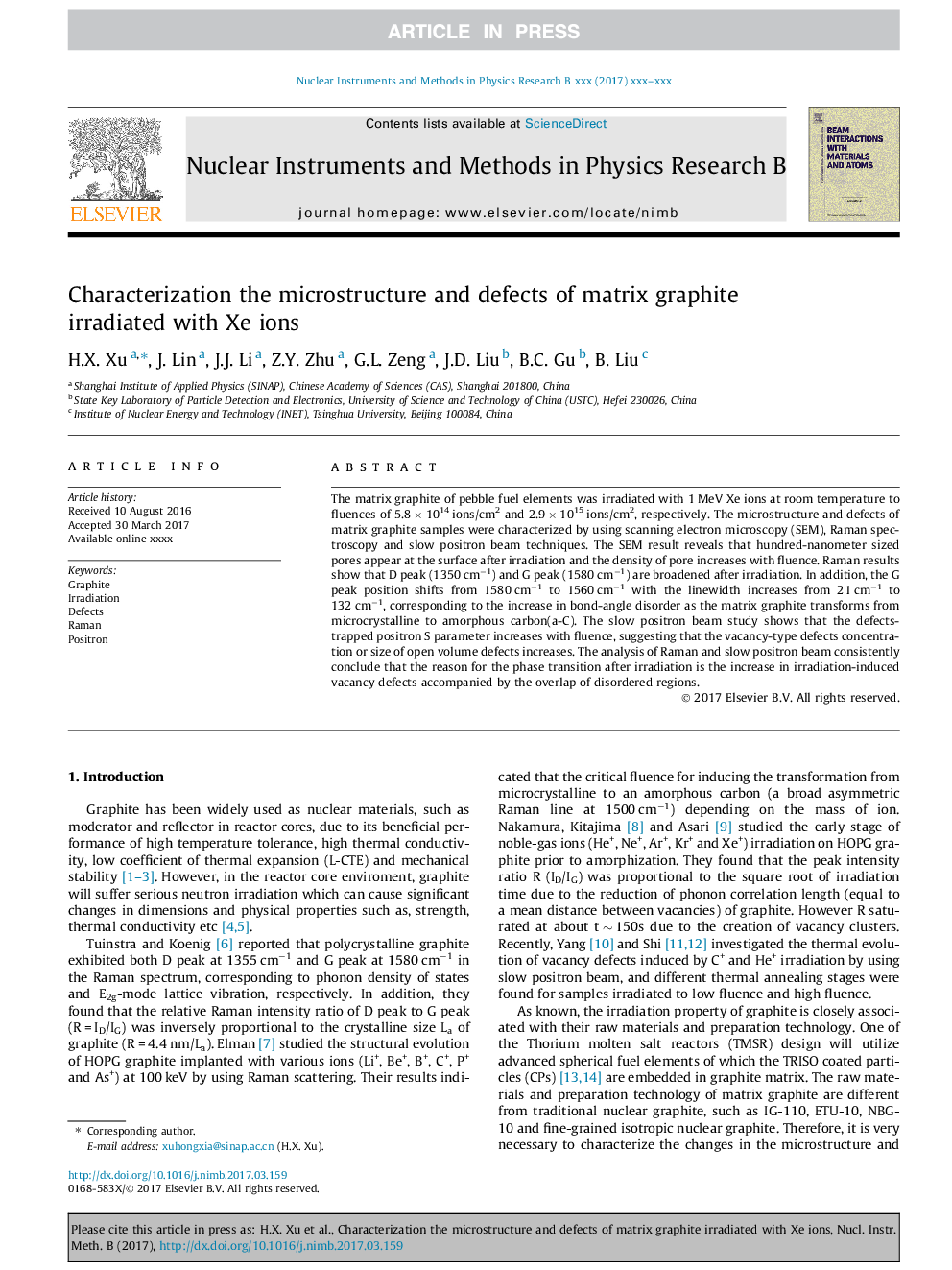| Article ID | Journal | Published Year | Pages | File Type |
|---|---|---|---|---|
| 5467591 | Nuclear Instruments and Methods in Physics Research Section B: Beam Interactions with Materials and Atoms | 2017 | 5 Pages |
Abstract
The matrix graphite of pebble fuel elements was irradiated with 1Â MeV Xe ions at room temperature to fluences of 5.8Â ÃÂ 1014Â ions/cm2 and 2.9Â ÃÂ 1015Â ions/cm2, respectively. The microstructure and defects of matrix graphite samples were characterized by using scanning electron microscopy (SEM), Raman spectroscopy and slow positron beam techniques. The SEM result reveals that hundred-nanometer sized pores appear at the surface after irradiation and the density of pore increases with fluence. Raman results show that D peak (1350Â cmâ1) and G peak (1580Â cmâ1) are broadened after irradiation. In addition, the G peak position shifts from 1580Â cmâ1 to 1560Â cmâ1 with the linewidth increases from 21Â cmâ1 to 132Â cmâ1, corresponding to the increase in bond-angle disorder as the matrix graphite transforms from microcrystalline to amorphous carbon(a-C). The slow positron beam study shows that the defects-trapped positron S parameter increases with fluence, suggesting that the vacancy-type defects concentration or size of open volume defects increases. The analysis of Raman and slow positron beam consistently conclude that the reason for the phase transition after irradiation is the increase in irradiation-induced vacancy defects accompanied by the overlap of disordered regions.
Related Topics
Physical Sciences and Engineering
Materials Science
Surfaces, Coatings and Films
Authors
H.X. Xu, J. Lin, J.J. Li, Z.Y. Zhu, G.L. Zeng, J.D. Liu, B.C. Gu, B. Liu,
